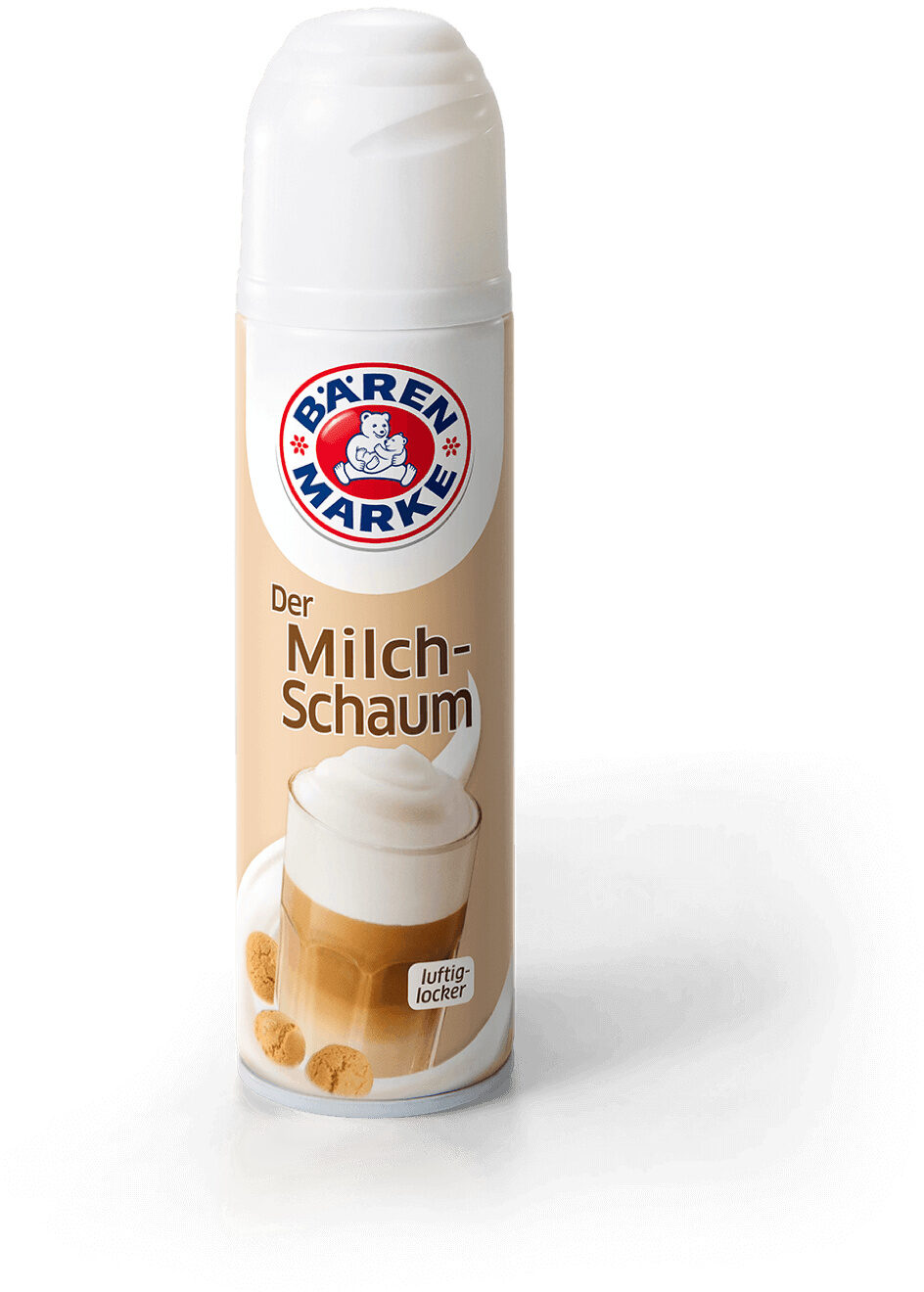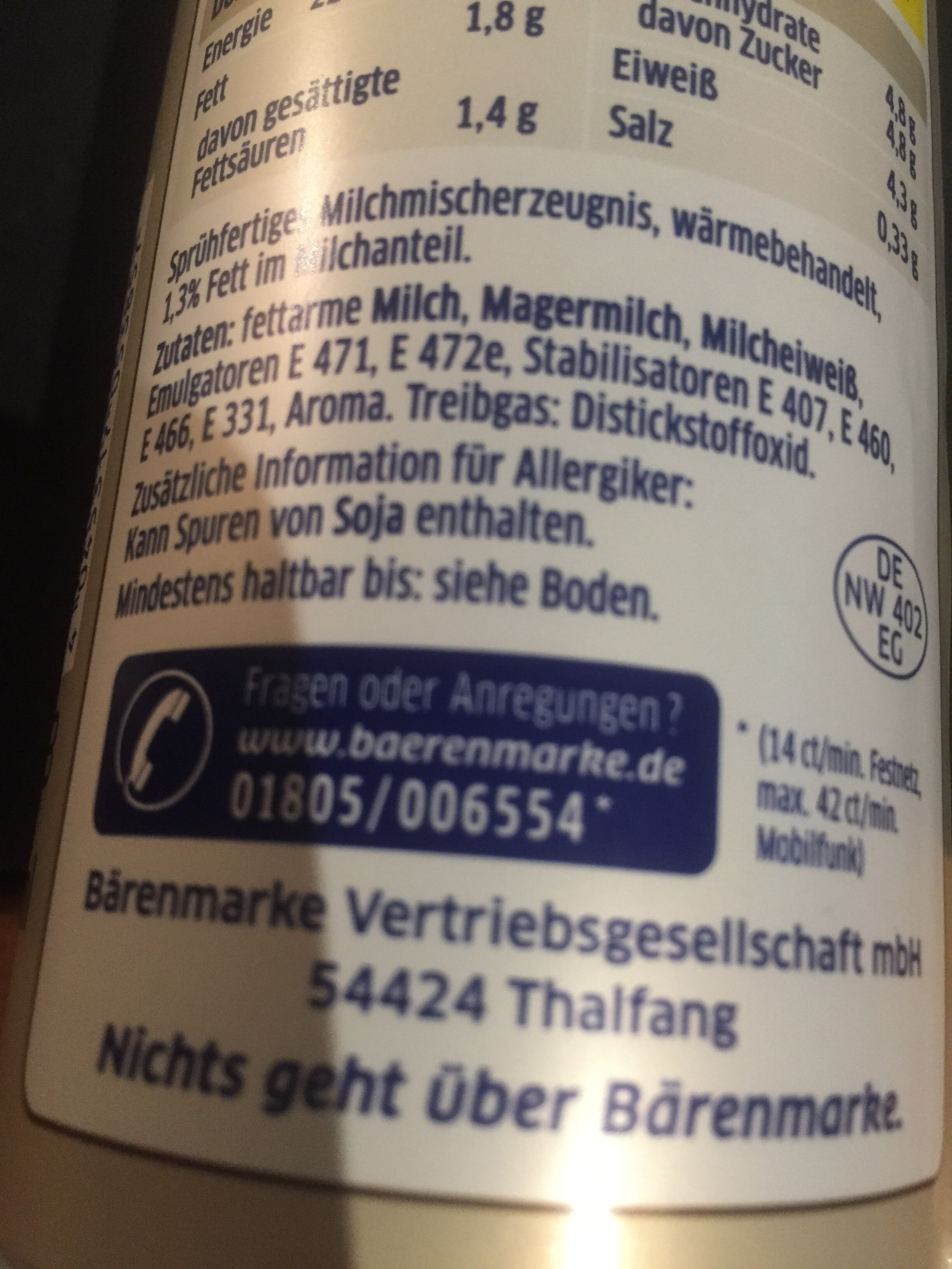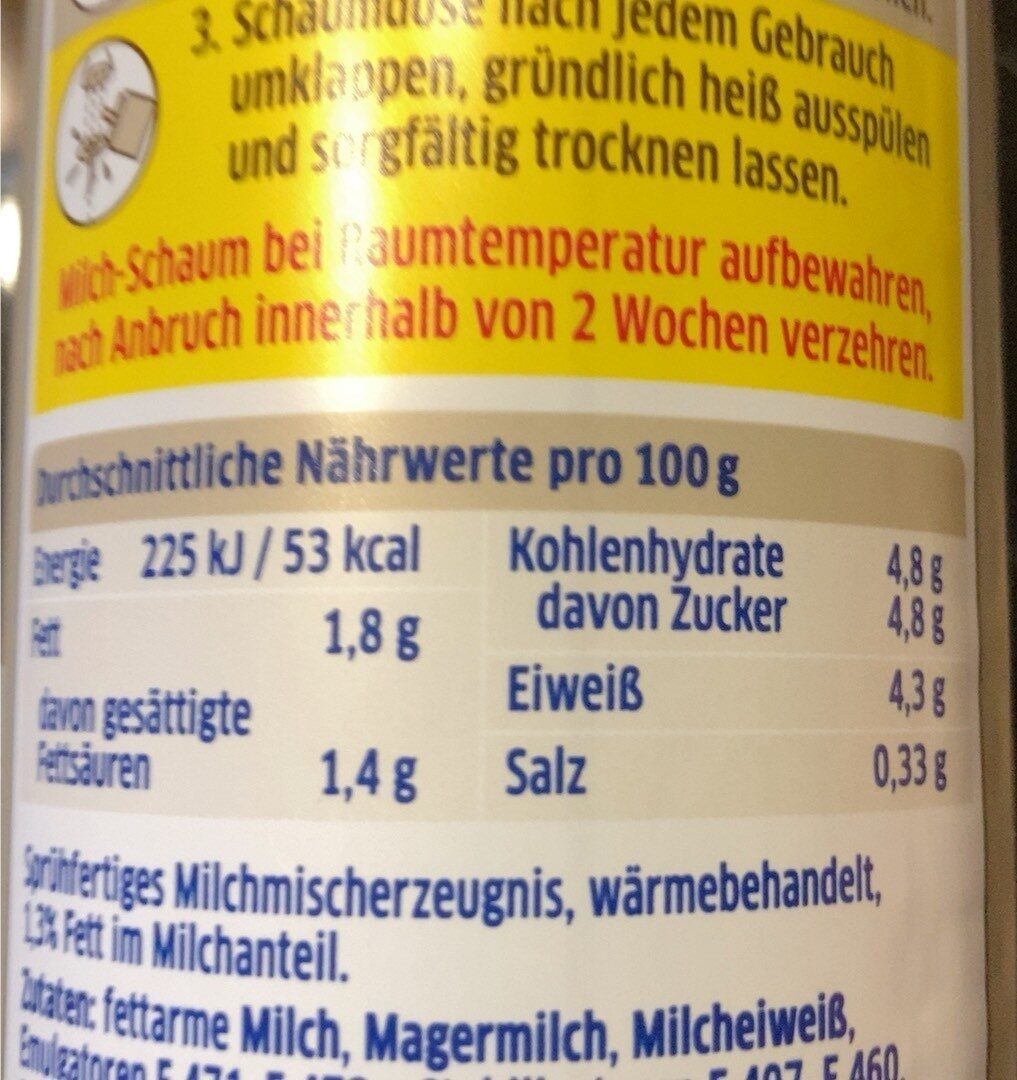Bärenmarke Der Milch schaum Aus Alpenmilch - 250 ml
This product page is not complete. You can help to complete it by editing it and adding more data from the photos we have, or by taking more photos using the app for Android or iPhone/iPad. Thank you!
×
Barcode: 4045317053857 (EAN / EAN-13)
Quantity: 250 ml
Brands: Bärenmarke
Categories: Dairies, Creams, Squirty creams, de:Milchschaum, Milk foam
Manufacturing or processing places: Deutschland
Traceability code: DE NW-402 EG
Link to the product page on the official site of the producer: https://www.baerenmarke.de/produkte/der-...
Stores: EDEKA
Countries where sold: Germany
Matching with your preferences
Environment
Carbon footprint
Packaging
Transportation
Report a problem
Data sources
Product added on by openfoodfacts-contributors
Last edit of product page on by bartolomeu.
Product page also edited by gourmet, kiliweb, moon-rabbit, roboto-app, yuka.sY2b0xO6T85zoF3NwEKvlhd7f9PVuxXHZzPWxkiLz4_WCLixU-5K7YPwbqo.










